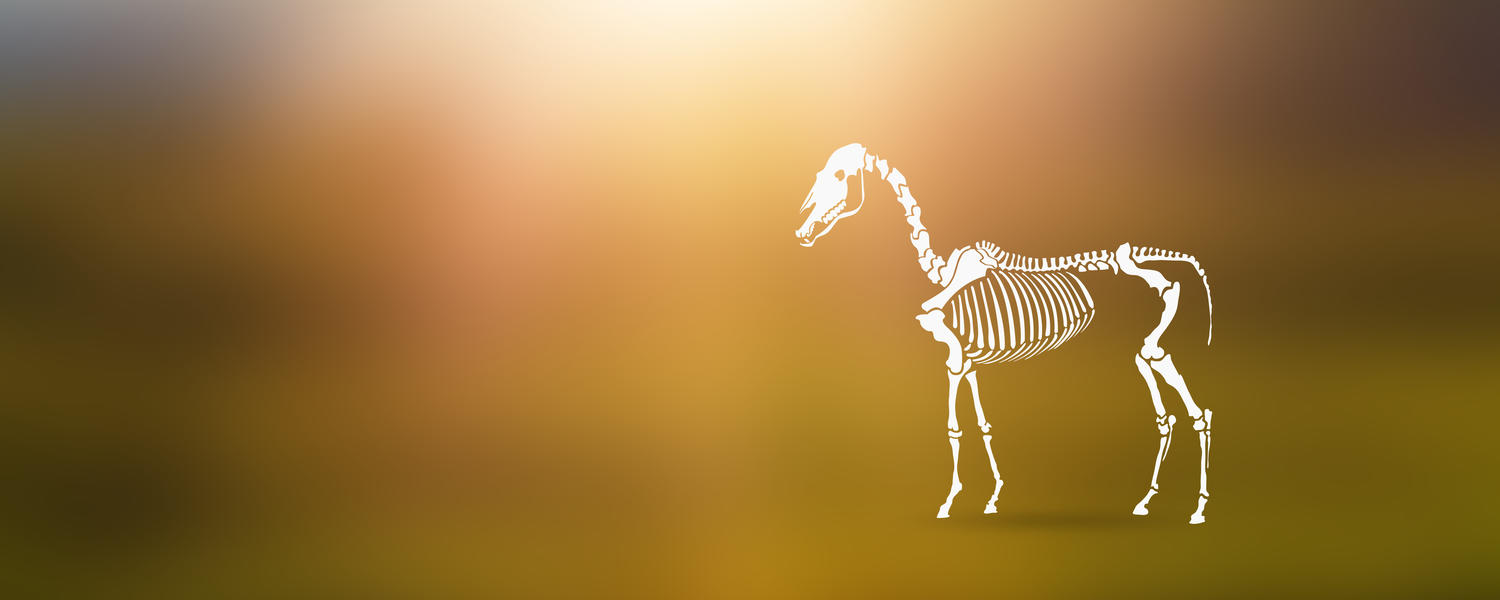
Anatomy: Equine
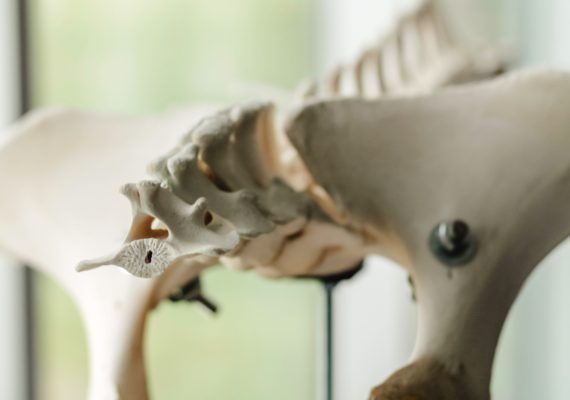
Welcome to equine anatomy!
We will be going through some of the major body systems, such as the respiratory system, the digestive system, the cardiovascular system and the musculo-skeletal system.

Using accurate and descriptive language when communicating between different professionals in the veterinary field is very important.
Look at the image above. These are the directional terms we use in veterinary medicine. We use these terms for not only horses, but all veterinary species. Some of the terms used in human medicine are similar, but many are different as humans stand straight on only two limbs.
Using these terms accurately is very important, so it is important for you to have a good understanding of what each term means and is referring to.

Equine Skeleton
Here is an overview of the equine skeleton. Can you name any of the major bones of the skeleton? Can you see any differences from the canine and feline skeletons we saw yesterday?
Image Credit: Natural History Museum London
Equine Musculoskeletal System
In this video you learn about equine bones and muscles! You will also learn the difference between plantigrades, digitigrades, and unguligrades. Horses are extreme unguligrades. As a result, their limbs are longer which allows them to take longer steps. They have also decreased the weight of their lower legs which reduces the cost of energy they have to use to swing each leg, making them highly effective at running!
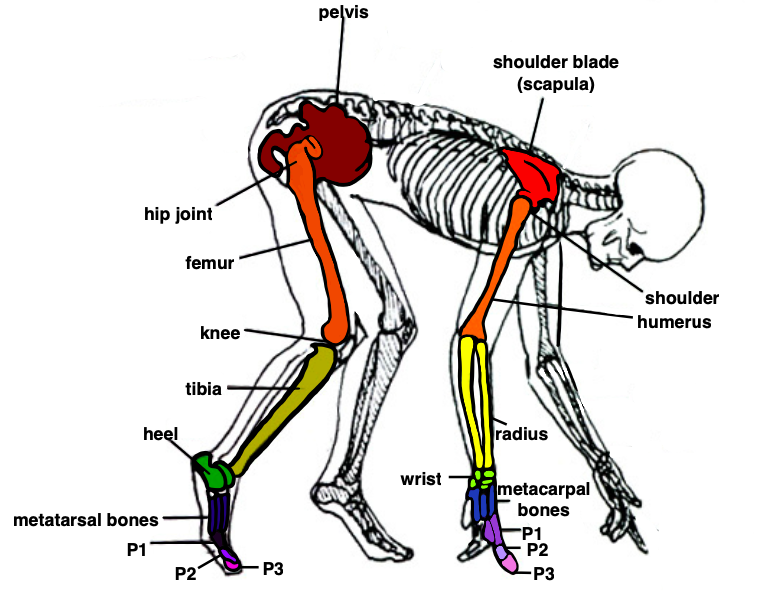
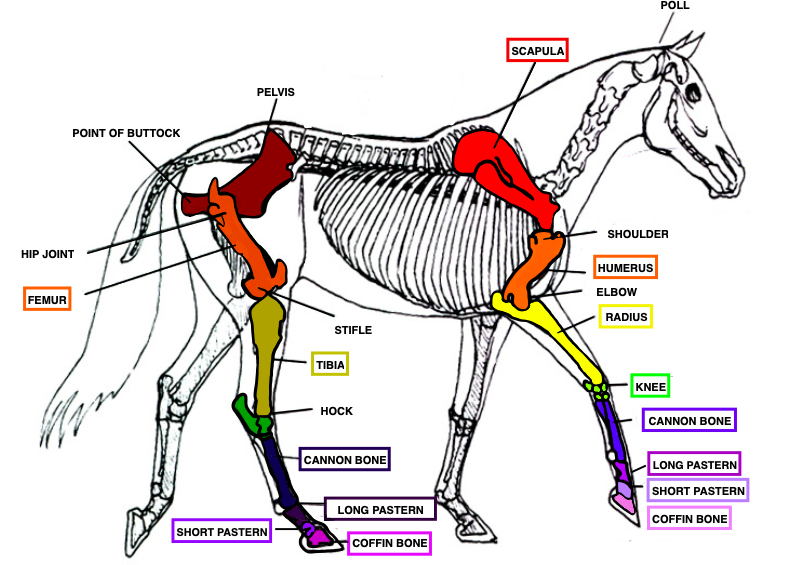

Distal Limb
The bones in a horse’s distal leg have many different names. The common names of these bones are the cannon bone, the long pastern bone, the short pastern bone, and the coffin bone. On either side of the cannon bone are splint bones that are remnants of the other fingers that were present in the ancestors of the horse. Did you know that horses walk on the equivalent of a human’s middle finger? Over time, their five digits have been reduced to one single digit.

Distal Limb Joints
Joints allow for movement between bones. In the distal horse limb there are 3 joints: the distal interphalangeal joint, the proximal joint, and the metacarpophalangeal joint. These names are pretty complicated, so equine veterinarians generally use common names such as the fetlock joint, the pastern joint, and the coffin joint. Bones are also connected by ligaments, which are tough bands of tissue that hold the joints and bones together.

Hoof
A horse’s hoof is equivalent to a human fingernail and is made up of a protein called keratin. Underneath the hoof wall made of keratin, there are fingerlike projections of tissue called laminae that hold the hoof wall to the bone underneath. Since horses are so heavy, their hooves are designed to decrease the impact of the force when their foot hits the ground.

Anatomy of the Hoof
A horse’s hoof has multiple different parts. They have a wall, a sole, bulbs, and a frog. The bulbs and frog are equivalent to the skin of a human’s finger. So, if a horse’s hoof wall is like the fingernail in a human and the bulbs and frog is like the skin, what do you think the horse is walking on?
Comparative Anatomy Break!
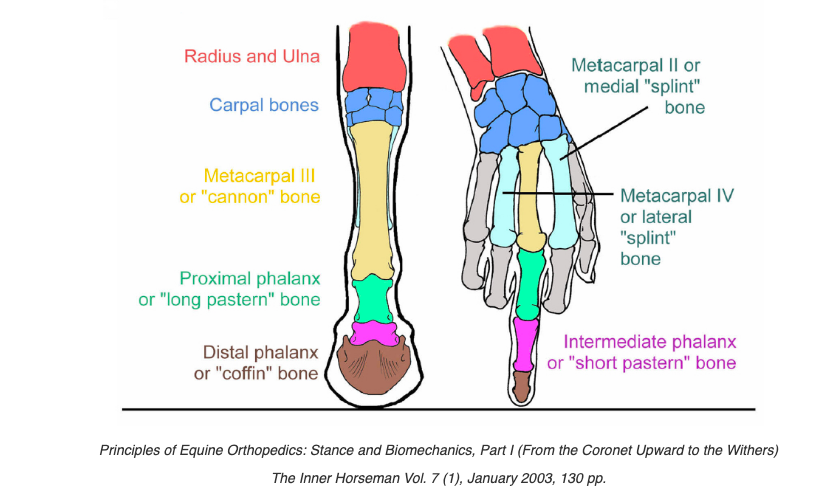
Equine Muscles
Horses have adapted to be very good athletes. Equine limbs display extreme adaptions for a running lifestyle.
Their limbs are long and have most of their muscles at the top of their legs to help increase the length of their stride. Several muscles in their legs, especially those more distal, have also been reduced or replaced with bands of tendons or ligaments.
Can you think of a reason horses might have less muscles in their distal legs?
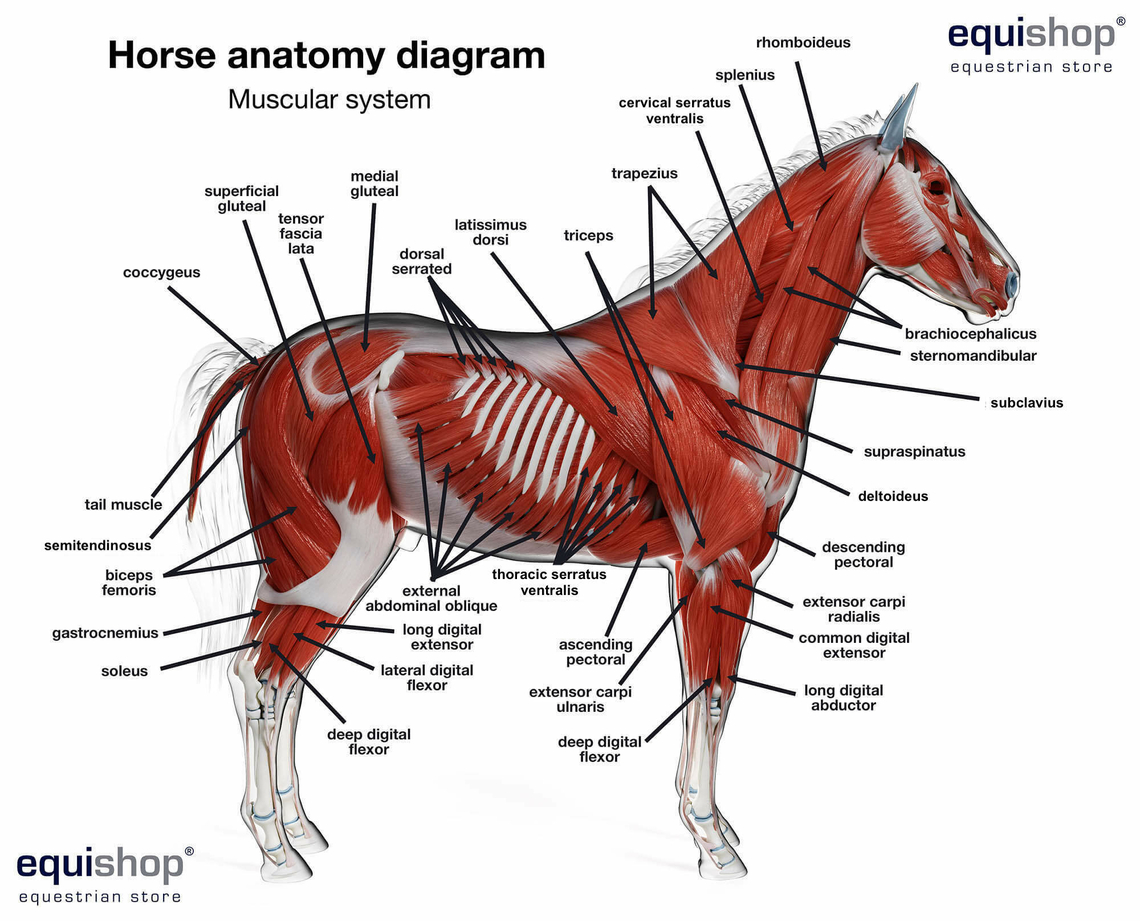
https://www.equishop.com/en/blog/horse-anatomy-body-parts-muscles-skeleton-n299
Horses can remain standing for very long periods of time because when horses stand, most of their weight is carried by tendons and ligaments that do not tire and expend minimal energy. This allows horses to conserve energy and allows horses to sleep standing up!

Here is an overview of equine organs!
The Respiratory System

The Equine Respiratory System
Just like us, horses need to breathe oxygen in order to fuel their muscles. The respiratory system includes the lungs and the path that air takes to get to the lungs. Horse lungs are massive! Human lungs can hold 1.5x more air than an empty milk jug, but a horse’s lungs can hold 14 milk jugs worth of air!
Horses are obligate nasal breathers – they can’t breathe through their mouths. This is because the pathway between the mouth and the lungs is blocked off so that food doesn’t accidentally get brought into the lungs.
The Cardiovascular System

Equine Heart
Horses have really big hearts! A horse’s heart is 13 times bigger than an adult man’s heart. Horses are incredible athletes and they need to have a very strong heart so that they can get oxygen and nutrients to their muscles while they are running.
The Gastrointestinal System

Equine Digestion
Just like dogs and cats, food moves through the digestive system of a horse in the same manner. However, horses like other herbivores eat only plants, so they have developed special adaptions of the digestive system to help get the most out of their food sources. Plants are made up of molecules that animals are unable to digest on their own. Herbivores, like horses, have to come up with a strategy to fix this! Horses are hindgut fermentors, which means they take advantage of bacteria housed in the colon and cecum that can digest these plant substances. These bacteria digest the horses food for them, resulting in horses now being able to absorb these digested nutrients. Horses are basically farming bacteria inside their guts to help them digest their food for them!
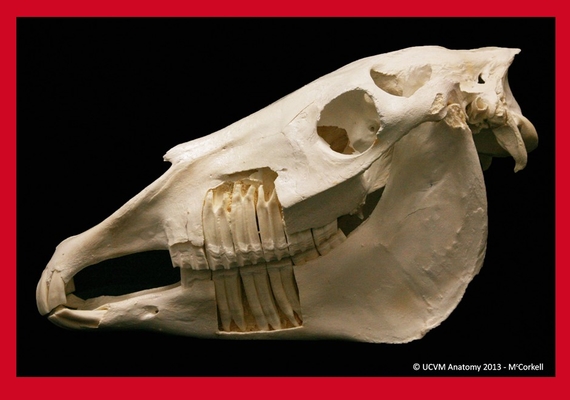
Equine Oral Cavity
What makes human teeth and horse teeth different? Horse teeth grow continuously throughout their life, while human teeth stop growing once our permanent adult teeth come in.
Horse teeth are naturally ground down by chewing rough, fibrous food like hay. Just like humans, horses can have teeth problems. Sometimes, horse teeth wear unevenly, and they can get sharp edges that can injure their cheeks and tongue. Veterinarians fix this by “floating”, a process that manually grinds down the points of the teeth that aren’t naturally ground down from chewing.

Equine Stomach
A horse’s stomach is very unique. Your stomach, and the stomach of dogs and cats, are completely glandular, meaning the inside of the stomach is completely covered in glands that secrete mucous, acid, and proteins that help breakdown food. A horse’s stomach has both glandular and non-glandular sections, meaning that part of the inside of their stomach is made up of a lining similar to skin, while the other part is covered in glands that secrete things like acid to help breakdown food. These glandular and non-glandular sections are separated by a band called the margo plicatus.
Colon and Cecum
Horses have a massive cecum and colon that contain bacteria to help breakdown the food that the stomach cannot. How massive is massive? The cecum and colon house billions of bacteria and can fit between 90 to 135 liters of liquid - that’s equivalent to almost 34 jugs of milk!
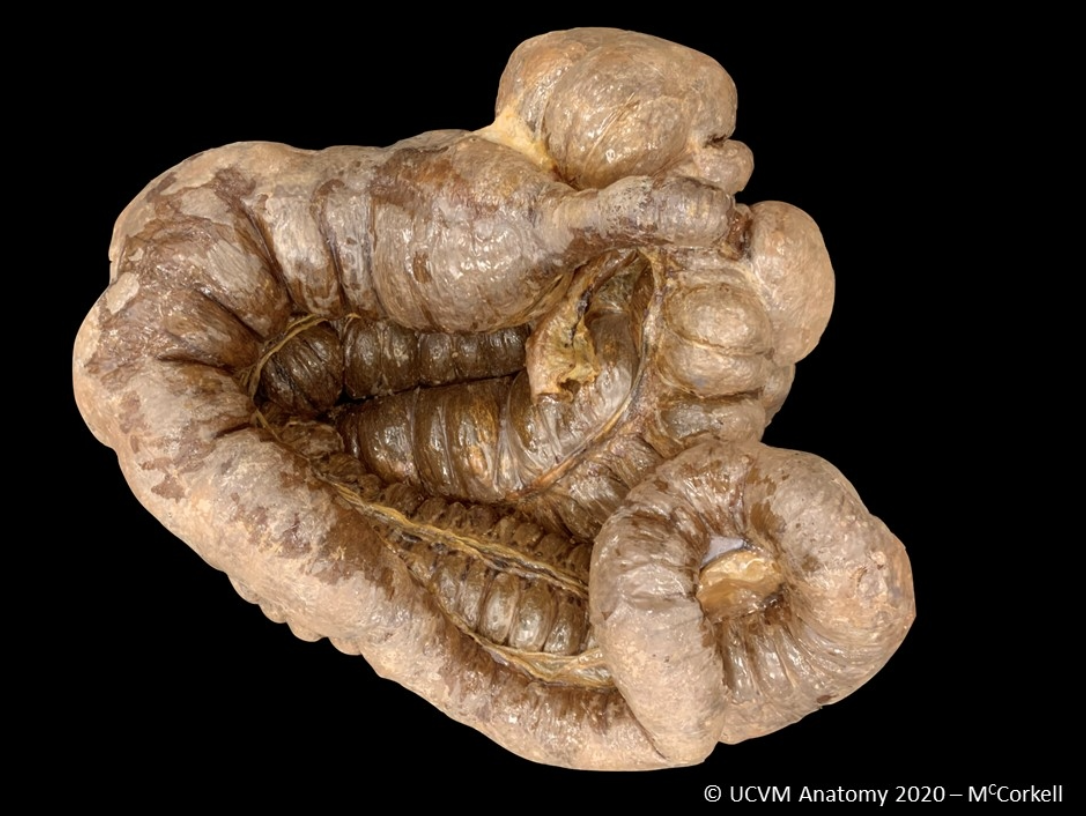

TEST YOUR KNOWLEDGE!!
Which of the below diagrams shows the organs in the correct location?
